- Advertise in AFLOAT

Cook’s 1770 voyage – 250 years on
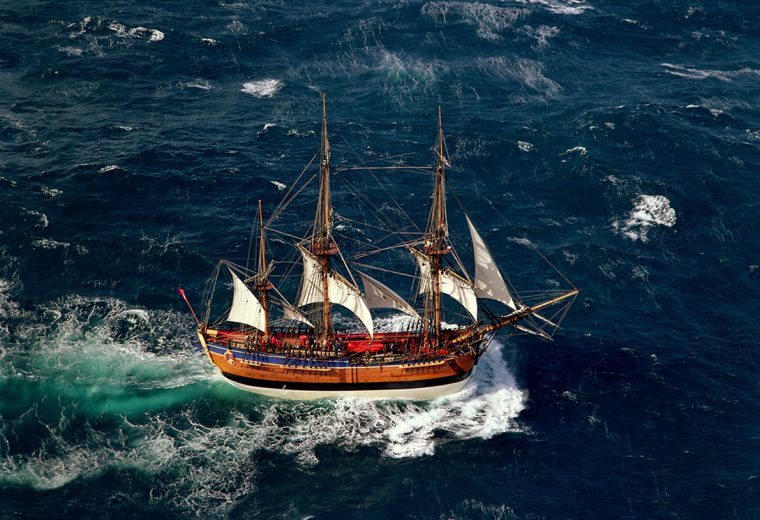
The 250th anniversary of Cook’s landing in Kamay/Botany Bay on April 29 will be marked by the Australian National Maritime Museum with the launch of three new digital products from the Encounters 2020 program. Additional elements of the program will be made available to the public over the coming months.
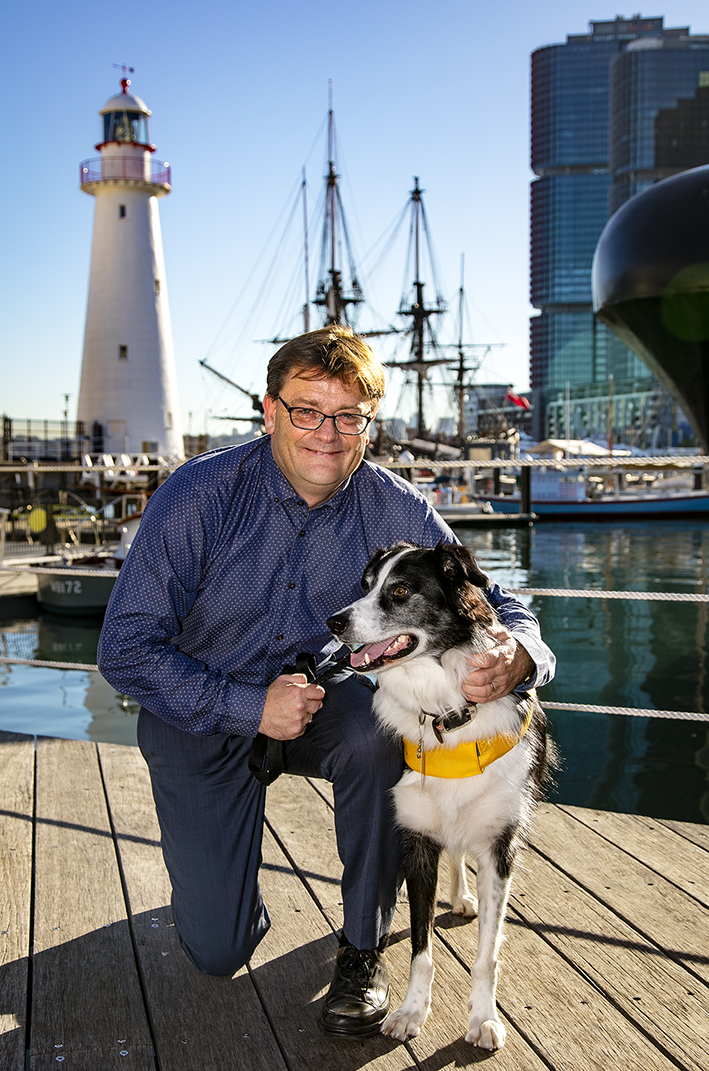
“The 250th is an invaluable opportunity to look at this historical event with 21st century eyes and provide greater context,” said Museum Director and CEO Kevin Sumption PSM.
“In the past, the 1770 voyage was principally seen from the European view, and the view of Australia’s First Nations people was generally absent. With all our program elements we have undertaken consultation with First Nations people and, as a result, we can expand our knowledge and understanding by looking at both the view from the ship and the view from the shore.”
“Over the coming months, we will launch materials which present Cook’s achievements and legacy, investigate the myths that have grown around him, explore the symbolism of Cook and the Endeavour and investigate the consequences, intended or otherwise of 1770.”
The Museum is launching three elements of the program today
- Cook’s Voyages – View from the Shore – an online game
Encounters 2020 Education resources
- Rooftop projection on the Museum to mark the milestone.
“The program would not have been possible without the generous support of the Australian Government” Mr Sumption said.
Cook’s Voyages
Cook’s Voyages is a new online game developed by the Australian National Maritime Museum to engage students with the 250th anniversary. Importantly, the game takes the approach of highlighting a First Nations perspective on player choices as they take command of an 18th Century voyage into the Pacific Ocean, at this stage still unmapped by Europeans.
Players choose from a series of missions, select their crew and stock their vessel (the HMB Enterprise) with all the equipment needed to achieve their goals and return safely to England. Players will need to choose wisely, as the challenges and adventures that await them will stretch the crew and vessel to its limits. If they survive, players will be judged by the British Admiralty and the public on the choices they made along the way, with reputation all important in 18th Century London society.
For the first time, players can engage with perspectives from both on the shore, as well as from the ship, making this a landmark game that responds to our dynamic understanding of these early interactions between the British and Australia’s First People. If players choose to act responsibly, they can learn language from five different Indigenous nations as they travel up Australia’s East Coast while also taking the opportunity to record the local plants and animals on Country at each location.
The game is designed to challenge students across a series of content areas, as well as engaging them to use and develop key developmental skills.
The Museum has worked closely with specialists Roar Educate in the development of Cook’s Voyages. This new game builds on the lessons from and success of the previous collaboration on ‘The Voyage’, a game that focused on the era of convict transportation. The game links closely to the Australian Curriculum and is designed for classroom use, with the gaming experience designed to last approximately 30 minutes and the opportunity for students to replay the game multiple times to achieve different goals and learning outcomes.
The game is located at www.sea.museum/cooks-voyage
A new suite of resources has been designed to support teachers and guide students toward a deeper understanding of the dual perspectives of Cook’s 1770 voyage. The resources are intended for all Australian teachers and students with the goal of reaching lasting benefit and increased knowledge of our shared Australian history.
When engaging with Endeavour’s east coast voyage, students and teachers will be able to learn the truth of our nation’s history from dual perspectives – with an emphasis on the ‘view from the shore’ completing and balancing the ‘view from the ship’. It also provides a platform to discuss the many other encounters that have occurred around the continent over time.
There are resources for ages F-10 and all content is linked to the Australian Curriculum and Australian Professional Teaching Standards.
The resources can be found at https://www.sea.museum/learn/school-excursions/teacher-resources/encounters-2020
The strange big canoe
A digital artwork, for projection onto the Museum’s iconic roof, has been developed to mark the anniversary.
While the projection will still take place, in recognition of the restrictions on public gatherings due to the COVID-19 pandemic, we will be offering the opportunity to view it on the museum website.
The work, the strange big canoe, created with the team from Ample Projects, is based on journal records and Indigenous histories that weave keynotes from HMB Endeavour’s voyage along the east coast into the perspectives of Indigenous communities along the shore and officers and crew on the ship.
From first sightings of land and ship on 19 April 1770 at Tolylwarar in the south east, a place Cook renamed Point Hicks, coastal communities watched as the ship made its way along the coastline – sending smoke signals ahead of it – as its commander Captain Cook watched, recorded and renamed lands from Kamay, Botany Bay to Bedhan Lag in the north on 22 August. There Cook planted the flag, renamed the island Possession Island, and sailed Endeavour north towards the spice islands, its hull full of plants and animals that had been collected.
View the projection:
- Latest edition of Afloat Magazine
- Subscribe to Afloat Magazine
- Merchandise
- Tips for Selling Your Boat
- Boat Reviews
- Marine Directory
- Classifieds
- International
- News & Events
SIGN UP Today
to our eNewsletter for your chance to WIN!

The Ages of Exploration
James cook interactive map.
Quick Facts:
James Cook explored much of the Pacific Ocean, and became the first European to discover the Hawaiian Islands, already inhabited by Polynesians
Click on the world map to view an example of the explorer’s voyage.

How to Use the Map
- Click on either the map icons or on the location name in the expanded column to view more information about that place or event
- Original "EXPLORATION through the AGES" site
- The Mariners' Educational Programs

Watch CBS News
Captain James Cook and the controversial legacy of Western exploration
By Ben Tracy
April 7, 2024 / 9:52 AM EDT / CBS News
On the Big Island of Hawaii, where the waves roll into Kealakekua Bay, a white obelisk 27 feet tall looms over the shoreline. It's a tribute to the great circumnavigator Captain James Cook. It stands just feet from where he died.
Akoni Palacat-Nelsen is a native Hawaiian (or kanaka, as they call themselves) who works for the Office of Hawaiian Affairs advocating for the native population. He says there is a lot of frustration that many people think history began here with Captain Cook.
"He brought a lot of diseases, he brought a lot of problems to our society, he introduced westernization," said Palacat-Nelsen.
Captain Cook is a controversial figure – villain or hero, colonizer or trailblazer, depending on who is telling the story. But what is not in dispute is that in the 1700s the British explorer literally put much of what we now know as the Pacific Ocean on the map, creating detailed diagrams of the places he was the first European to discover, including New Zealand, Australia, the Cook Islands (which still bear his name), and the islands of Hawaii.
"Whatever you think about Cook, he's certainly in the pantheon of the greatest explorers of all time," said writer Hampton Sides. "He gave us the contours of the Pacific Ocean."
Sides is author of the new book, "The Wide Wide Sea," documenting Cook's final and fateful voyage. "He had three voyages around the world; each one was monumental," said Sides.
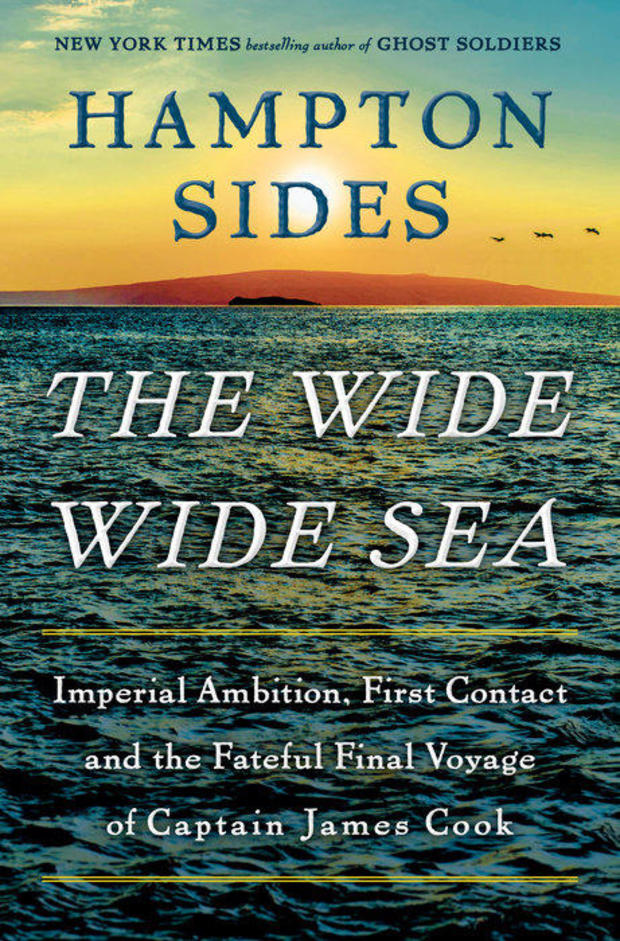
Cook's third voyage left England in July of 1776, just as the American Revolution was taking off. His mission was to go around the Cape of Good Hope and then proceed to the west coast of North America, all the way up to Alaska, in pursuit of the elusive, fabled Northwest Passage. On his way, he stumbled upon islands in the Pacific. "He couldn't believe that he had found these islands," Sides said. "These aren't just lowly atolls somewhere out in the Pacific. These are massive volcanic islands with thousands and thousands of people living here, a whole thriving, flourishing civilization. He couldn't believe it. He was astounded."
Cook and his men came ashore on the Big Island of Hawaii, warmly welcomed by the islanders at a temple during a religious festival.
Sides writes in his book that, unlike many of his contemporary explorers, Cook took a genuine interest in the people he encountered. He treated them with respect, tried to prevent his men from spreading venereal disease, and made little attempt to convert them to Christianity.
And yet, "On this third and final voyage, something was wrong with Cook," Sides said. "He was mercurial. He was violent. He was cruel to the native people that he encountered as well. He just was losing it all the time near the end."
That end came when Cook and his men overstayed their welcome, attempting to hold the king of Hawaii ransom to get back a rowboat taken by the local people. Sides said, "It turned into a brawl and a melee, and things did not go well for Captain Cook."
Cook was killed on the shore of Kealakekua Bay on Valentine's Day 1779.

And yet, nearly 250 years later Cook's story is still being told, revisited and revised as the age of imperialism has not aged so well. Statues of Cook have recently been toppled in Canada and Australia, his monument in Hawaii defaced. Cook was the leading edge of what Pacific Islanders call the "fatal impact," and the death and loss of their culture that followed.
Sides said, "I get the fact that he's become a symbol of imperialism, because he was the first. It's easy just to assign the blame to one person rather than all the people that came after him."
Yet, on the Big Island you still find Cook's name on a post office, roadside stands, and an apartment complex. There is no simple break from this piece of the past.
The Puʻuhonua o Hōnaunau National Historical Park is one of the last places on the Big Island that still looks like what Captain Cook and his crew would have seen centuries ago. It was known as a place of refuge, where if you broke a rule or a law you could get a second chance.
It's also a place where Hawaiians get to preserve and share their history, said Keola Awong, the chief of interpretation and education. "It's a second chance for us to get to tell our story, and tell it from our perspective," she said.
She wants people to see Hawaii as more than a tourist attraction – more than white sands and scarlet sunsets, a place that existed long before it was "discovered" by a Captain named Cook.
Awong said she feels most tourists who come to Hawaii don't know much about the true history. "I think they see the history told by the western point of view," she said. "Our culture is very much alive. Our culture carries on and continues."
READ AN EXCERPT: "The Wide Wide Sea" by Hampton Sides
For more info:
- "The Wide Wide Sea: Imperial Ambition, First Contact and the Fateful Final Voyage of Captain James Cook" by Hampton Sides (Doubleday), in Hardcover, Large Print Trade Paperback, eBook and Audio formats, available April 9 via Amazon , Barnes & Noble and Bookshop.org
- hamptonsides.com
- Puʻuhonua o Hōnaunau National Historical Park, Hawaii
Story produced by John Goodwin. Editor: Ben McCormick.

Ben Tracy is CBS News' senior national and environmental correspondent based in Los Angeles. He reports for all CBS News platforms, including the "CBS Evening News with Norah O'Donnell," "CBS Mornings" and "CBS Sunday Morning."
More from CBS News

This week on "Sunday Morning" (April 14): The Money Issue
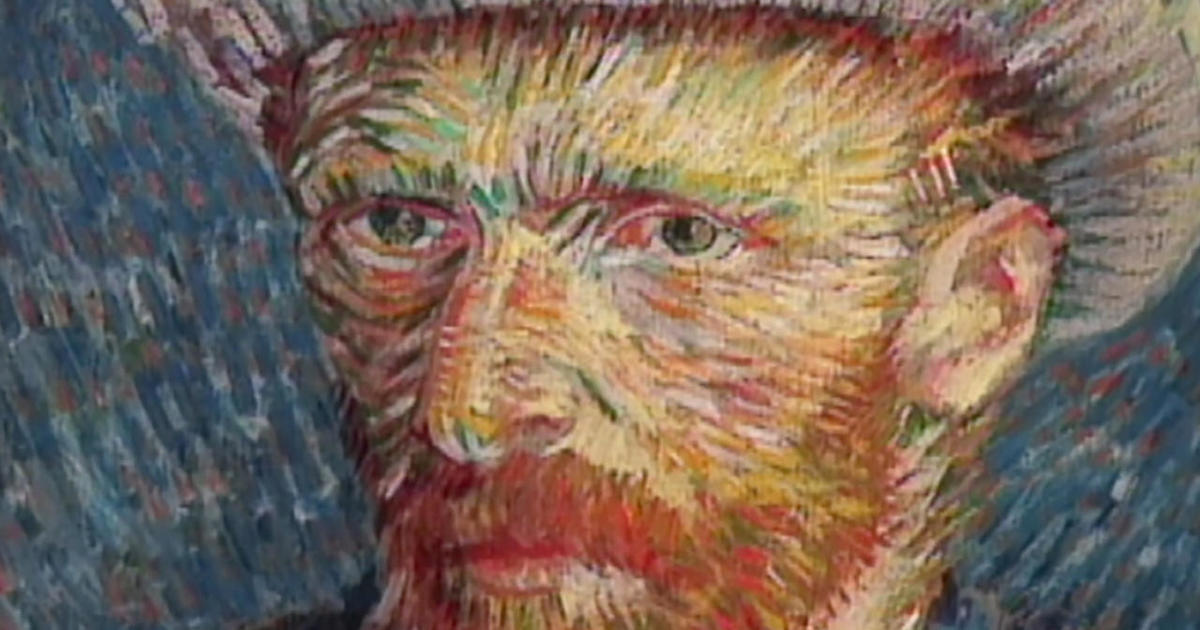
"Sunday Morning" archives: Impressionism at 150

Truck plows into Texas DPS office in "intentional" act, killing 1, officials say

Hawaii-born Akebono, Japan's first foreign-born sumo grand champ, dead at 54

What is the impact and legacy of Cook’s voyages?
In this film, historians, artists, anthropologists and members of the indigenous communities in Australia, New Zealand and Canada, consider contemporary perspectives on Cook’s voyages and examine their legacy.
Cite this page
Your donations help make art history free and accessible to everyone!
- Statement From Minister For Racing
- Frank MacDonald Memorial Prize Winners On Their Way
- Police Lay Charges After Pursuit Through Sydney’s West
- Second man charged following home invasion in Doncaster East
- Boost For Darwin Coffee Venues
- Victoria’s homelessness sector in crisis, facing workforce exodus
- NZ Police Investigating New Market Ram Raid
- IATA WOCA Conference Outlines Collaborative, Sustainable and Inclusive Roadmap for Aviation across the Americas
- Territory Tourism Discount Scheme extended for Central and Barkly regions
- Police Lay Charges After Fatal Stabbing In Doonside

Cook’s 1770 voyage – 250 years on
- 29 Apr 2020 5:12 am AEST Date Time
Cook’s Voyages is a new online game developed by the Australian National Maritime Museum to engage students with the 250 th anniversary. Importantly, the game takes the approach of highlighting a First Nations perspective on player choices as they take command an 18 th Century voyage into the Pacific Ocean, at this stage still unmapped by Europeans.
Players choose from a series of missions, select their crew and stock their vessel (the HMB Enterprise) with all the equipment needed to achieve their goals and return safely to England. Players will need to choose wisely, as the challenges and adventures that await them will stretch the crew and vessel to its limits. If they survive, players will be judged by the British Admiralty and the public on the choices they made along the way, with reputation all important in 18 th Century London society.
For the first time, players can engage with perspectives from both on the shore, as well as from the ship, making this a landmark game that responds to our dynamic understanding of these early interactions between the British and Australia’s First People. If players choose to act responsibly, they can learn language from five different Indigenous nations as they travel up Australia’s East Coast while also taking the opportunity to record the local plants and animals on Country at each location.
The game is designed to challenge students across a series of content areas, as well as engaging them to use and develop key developmental skills.
The Museum has worked closely with specialists Roar Educate in the development of Cook’s Voyages. This new game builds on the lessons from and success of the previous collaboration on ‘The Voyage’, a game that focused on the era of convict transportation. The game links closely to the Australian Curriculum and is designed for classroom use, with the gaming experience designed to last approximately 30 minutes and the opportunity for students to replay the game multiple times to achieve different goals and learning outcomes.
The game is located at www.sea.museum/cooks-voyage
Encounters 2020 Education resources
A new suite of resources hasbeen designed to support teachers and guide students toward a deeper understanding of the dual perspectivesof Cook’s 1770 voyage. The resources are intended for all Australian teachers and students with the goal of reaching lasting benefit and increased knowledge of our shared Australian history.
When engaging with Endeavour’s east coast voyage, students and teachers will be able to learn the truth of our nation’s history from dual perspectives – with an emphasis on the ‘view from the shore’ completing and balancing the ‘view from the ship’. It also provides a platform to discuss the many other encounters that have occurred around the continent over time.
There are resources for ages F-10 and all content is linked to the Australian Curriculum and Australian Professional Teaching Standards.
The resources can be found at https://www.sea.museum/learn/school-excursions/teacher-resources/encounters-2020
the strange big canoe
A digital artwork, for projection onto the Museum’s iconic roof, has been developed to mark the anniversary.
While the projection will still take place, in recognition of the restrictions on public gatherings due to the COVID-19 pandemic, we will be offering the opportunity to view it on the museum website.
The work, the strange big canoe,created with the team from Ample Projects, is based on journal records and Indigenous histories that weave keynotes from HMB Endeavour’svoyage along the east coast into the perspectives of Indigenous communities along the shore and officers and crew on the ship.
From first sightings of land and ship on 19 April 1770 at Tolylwarar in the south east, a place Cook renamed Point Hicks, coastal communities watched as the ship made its way along the coastline – sending smoke signals ahead of it – as its commander Captain Cook watched, recorded and renamed lands from Kamay, Botany Bay to Bedhan Lag in the north on 22 August. There Cook planted the flag, renamed the island Possession Island, and sailed Endeavour north towards the spice islands, its hull full of plants and animals that had been collected.
View the projection at https://www.sea.museum/whats-on/events/the-strange-big-canoe-rooftop-projection
You might also like

Experts of the Committee on the Elimination of Racial Discrimination Commend San Marino’s Progress in Establishing a National Human Rights Institute, Ask…

Homicide At Kilkivan

UN torture prevention body to visit Albania

Waste Levy Removed For Another Ten Flood-hit Areas

Reminder: Road resealing works in Jindabyne on Saturday 13 April 2024

Hills Shire Declared Natural Disaster Zone
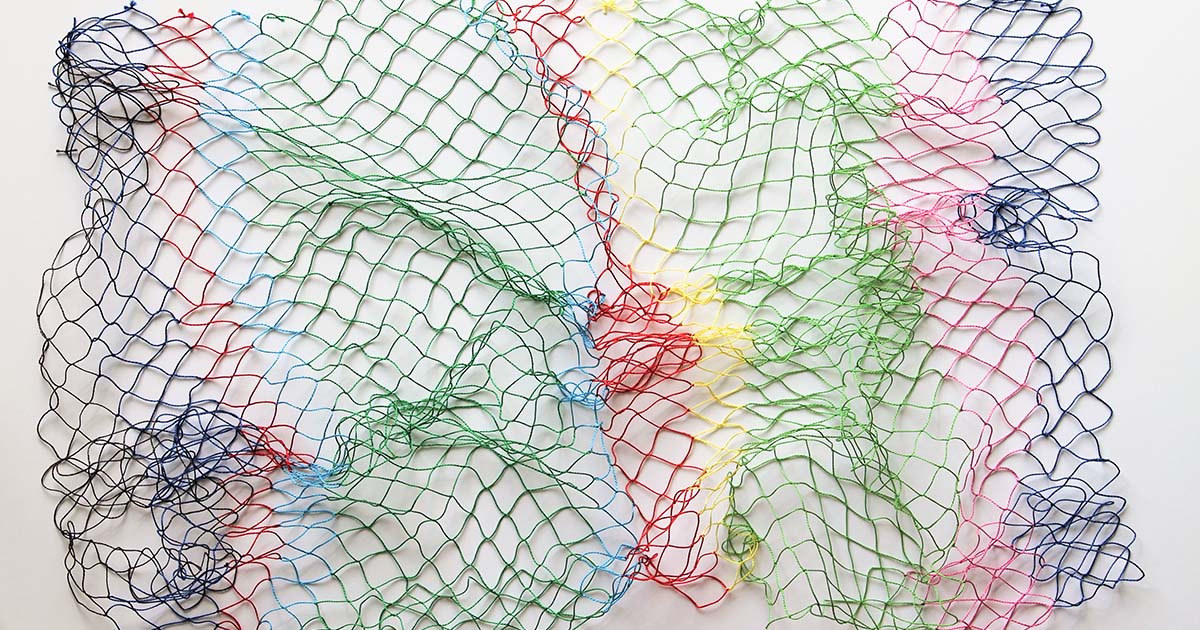
NRCG May 2024 Exhibitions: Ballina Shire

Minimum standards for regulated workers – Implementation Report published
© 2024 - The National Tribune Australia
- Terms of Use
- Privacy Policy
We will keep fighting for all libraries - stand with us!
Internet Archive Audio

- This Just In
- Grateful Dead
- Old Time Radio
- 78 RPMs and Cylinder Recordings
- Audio Books & Poetry
- Computers, Technology and Science
- Music, Arts & Culture
- News & Public Affairs
- Spirituality & Religion
- Radio News Archive

- Flickr Commons
- Occupy Wall Street Flickr
- NASA Images
- Solar System Collection
- Ames Research Center

- All Software
- Old School Emulation
- MS-DOS Games
- Historical Software
- Classic PC Games
- Software Library
- Kodi Archive and Support File
- Vintage Software
- CD-ROM Software
- CD-ROM Software Library
- Software Sites
- Tucows Software Library
- Shareware CD-ROMs
- Software Capsules Compilation
- CD-ROM Images
- ZX Spectrum
- DOOM Level CD

- Smithsonian Libraries
- FEDLINK (US)
- Lincoln Collection
- American Libraries
- Canadian Libraries
- Universal Library
- Project Gutenberg
- Children's Library
- Biodiversity Heritage Library
- Books by Language
- Additional Collections

- Prelinger Archives
- Democracy Now!
- Occupy Wall Street
- TV NSA Clip Library
- Animation & Cartoons
- Arts & Music
- Computers & Technology
- Cultural & Academic Films
- Ephemeral Films
- Sports Videos
- Videogame Videos
- Youth Media
Search the history of over 866 billion web pages on the Internet.
Mobile Apps
- Wayback Machine (iOS)
- Wayback Machine (Android)
Browser Extensions
Archive-it subscription.
- Explore the Collections
- Build Collections
Save Page Now
Capture a web page as it appears now for use as a trusted citation in the future.
Please enter a valid web address
- Donate Donate icon An illustration of a heart shape
The voyages of Captain James Cook
Bookreader item preview, share or embed this item, flag this item for.
- Graphic Violence
- Explicit Sexual Content
- Hate Speech
- Misinformation/Disinformation
- Marketing/Phishing/Advertising
- Misleading/Inaccurate/Missing Metadata
![[WorldCat (this item)] [WorldCat (this item)]](https://archive.org/images/worldcat-small.png)
plus-circle Add Review comment Reviews
4,505 Views
15 Favorites
DOWNLOAD OPTIONS
For users with print-disabilities
IN COLLECTIONS
Uploaded by ian frederick-rothwell on October 18, 2007
SIMILAR ITEMS (based on metadata)
- Skip to main content
- Keyboard shortcuts for audio player

- LISTEN & FOLLOW
- Apple Podcasts
- Google Podcasts
- Amazon Music
Your support helps make our show possible and unlocks access to our sponsor-free feed.
Capt. Cook's Final Voyage
"A lot of things started going wrong from the very beginning," historian Hampton Sides says of Cook's last voyage, which ended in the British explorer's violent death on the island of Hawaii in 1779. His book is The Wide Wide Sea: Imperial Ambition, First Contact, and the Fateful Final Voyage of Captain James Cook. Ken Tucker reviews Beyoncé's album Cowboy Carter .
Popular searches
Popular pages.
.jpg?h=400&la=en&mw=1920&w=1200)
Cook's Voyages
In this new online game students undertake scientific and navigational challenges while meeting with Australia's First People in world-changing encounters.
Cook's Voyages explores the many achievements and actions undertaken by Cook and his crews across three incredible voyages exploring the Pacific. Importantly, this game adds a perspective 'from the shore', from Larila, a proud pakana woman from Tasmania's north-east.
In each game players choose their own missions, select their crew and choose the equipment that will allow them to succeed. The game challenges them to keep their ship afloat, their crew alive and the Admiralty happy. It also guides them in exploring a First Nations perspective on Cook's visit to Australia and gives them the chance to learn some languages from five nations along Australia's eastern coast.
The game has been designed to meet and enliven the curriculum across a series of content areas and develop a range of skills and enquiry techniques. When played in conjunction with the resources listed below, the experience builds understanding of the historical context in which Cook's voyages took place, their scientific achievements and the ongoing impact from some of his decisions on modern Australia, and particularly on Australia's First People.
SUBJECT : HASS
Years: 3,4,5
Awards: Winner – MAGNA (Museums and Galleries National Award) for Interpretation, Learning and Audience Engagement Judges citation – "Excellent co-design and consultation process with First Nations, and effective collaboration with First Nations communities and suppliers. A positive step towards decolonising education and presentation of Cook's invasion."
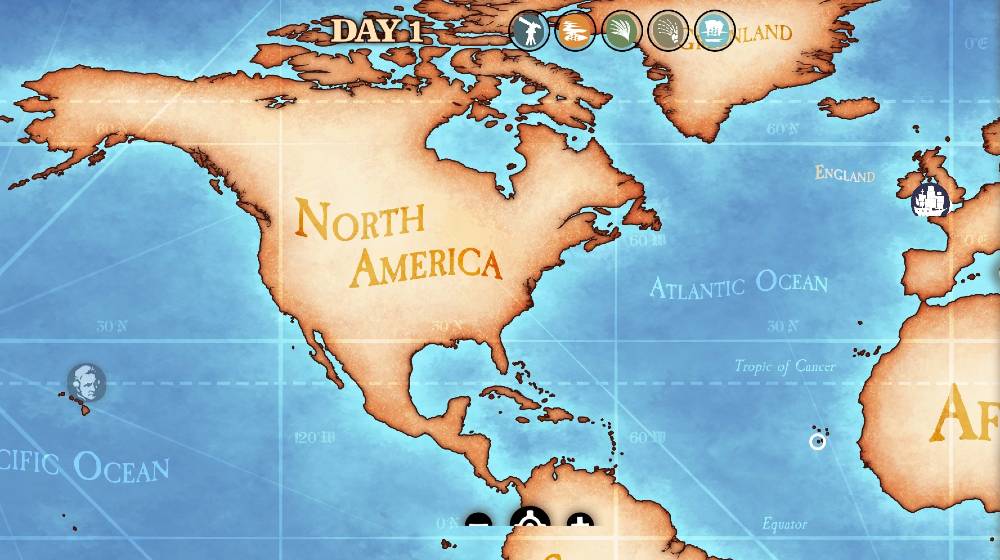
Further Resources
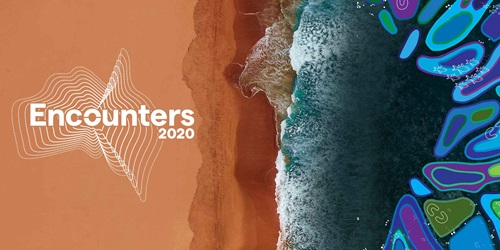
Encounters 2020
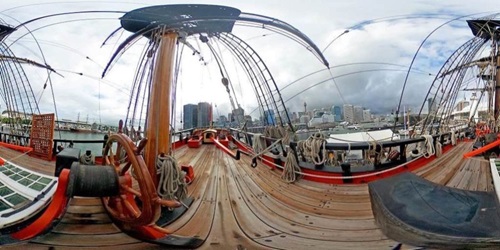
Virtual Endeavour
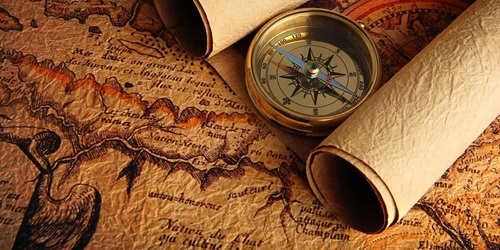
The HMB Endeavour's Voyage of Exploration
Find anything you save across the site in your account
How Captain James Cook Got Away with Murder
By Elizabeth Kolbert

On Valentine’s Day, 1779, Captain James Cook invited Hawaii’s King Kalani‘ōpu‘u to visit his ship, the Resolution. Cook and the King were on friendly terms, but, on this particular day, Cook planned to take Kalani‘ōpu‘u hostage. Some of the King’s subjects had stolen a small boat from Cook’s fleet, and the captain intended to hold Kalani‘ōpu‘u until it was returned. The plan quickly went awry, however, and Cook ended up face down in a tidal pool.
At the time of his death, Cook was Britain’s most celebrated explorer. In the course of three epic voyages—the last one, admittedly, unfinished—he had mapped the east coast of Australia, circumnavigated New Zealand, made the first documented crossing of the Antarctic Circle, “discovered” the Hawaiian Islands, paid the first known visit to South Georgia Island, and attached names to places as varied as New Caledonia and Bristol Bay. Wherever Cook went, he claimed land for the Crown. When King George III learned of Cook’s demise, he reportedly wept. An obituary that ran in the London Gazette mourned an “irreparable Loss to the Public.” A popular poet named Anna Seward published an elegy in which the Muses, apprised of Cook’s passing, shed “drops of Pity’s holy dew.” (The work sold briskly and was often reprinted without the poet’s permission.)
“While on each wind of heav’n his fame shall rise, / In endless incense to the smiling skies,” Seward wrote. Artists competed to depict Cook’s final moments; in their paintings and engravings, they, too, tended to represent the captain Heaven-bound. An account of Cook’s life which ran in a London magazine declared that he had “discovered more countries in the Atlantic and Pacific Oceans than all the other navigators together.” The anonymous author of this account opined that, among mariners, none would be “more entitled to the admiration and gratitude of posterity.”

The Best Books of 2024
Read our reviews of the year’s notable new fiction and nonfiction.
Posterity, of course, has a mind of its own. In 2019, the two-hundred-and-fiftieth anniversary of Cook’s landing in New Zealand, a replica of the ship he’d sailed made an official tour around the country. According to New Zealand’s government, the tour was intended as an opportunity to reflect on the nation’s complex history. Some Māori groups banned the boat from their docks, on the ground that they’d already reflected enough.
Cook “was a barbarian,” the then chief executive of the Ngāti Kahu iwi told a reporter. Two years ago, an obelisk erected in 1874 to mark the spot where Cook was killed, on Kealakekua Bay, was vandalized. “You are on native land,” someone painted on the monument. In January, on the eve of Australia Day, an antipodean version of the Fourth of July, a bronze statue of Cook that had stood in Melbourne for more than a century was sawed off at the ankles. When a member of the community council proposed that area residents be consulted on whether to restore the statue, a furor erupted. At a meeting delayed by protest, the council narrowly voted against consultation and in favor of repair. A council member on the losing side expressed shock at the way the debate had played out, saying it had devolved into an “absolutely crazy mess.”
Into these roiling waters wades “ The Wide Wide Sea: Imperial Ambition, First Contact and the Fateful Final Voyage of Captain James Cook ” (Doubleday), a new biography by Hampton Sides. Sides, a journalist whose previous books include the best-selling “ Ghost Soldiers ,” about a 1945 mission to rescue Allied prisoners of war, acknowledges the hazards of the enterprise. “Eurocentrism, patriarchy, entitlement, toxic masculinity,” and “cultural appropriation” are, he writes, just a few of the charged issues raised by Cook’s legacy. It’s precisely the risks, Sides adds, that drew him to the subject.
Cook, the second of eight children, was born in 1728 in Yorkshire. His father was a farm laborer, and Cook would likely have followed the same path had he not shown early promise in school. His parents apprenticed him to a merchant, but Cook was bored by dry goods. In 1747, he joined the crew of the Freelove, a boat that, despite its name, was designed for the distinctly unerotic task of ferrying coal to London.
After working his way up in the Merchant Navy, Cook jumped ship, as it were. At the age of twenty-six, he enlisted in the Royal Navy, and one of his commanders, recognizing Cook’s talents, encouraged him to take up surveying. A chart that Cook helped draft of the St. Lawrence River proved crucial to the British victory in the French and Indian War.
In 1768, Cook was given command of his own ship, H.M.S. Endeavour, a boxy, square-sterned boat that, like the Freelove, had been built for hauling coal. The Navy was sending the Endeavour to the South Pacific, ostensibly for scientific purposes. A transit of Venus was approaching, and it was believed that careful observation of the event could be used to determine the distance between the Earth and the sun. Cook and his men were supposed to watch the transit from Tahiti, which the British had recently claimed. Then, and only then, was the captain to open a set of sealed orders from the Admiralty which would provide further instructions.
The Endeavour departed from Plymouth, made its way to Rio, and from there sailed around the tip of South America. Arriving in Tahiti, where British and French sailors had already infected many of the women with syphilis, Cook drew up rules to govern his crew’s dealings with the island’s inhabitants. The men were not to trade items from the boat “in exchange for any thing but provisions.” (That rule appears to have been flagrantly flouted.)
The day of the transit—June 3, 1769—dawned clear, or, as Cook put it, “as favourable to our purposes as we could wish.” But the observers’ measurements differed so much that it was evident—or should have been—that something had gone wrong. (The whole plan, it later became clear, was fundamentally flawed.) Whether Cook had indeed waited until this point to open his secret instructions is unknown; in any event, they pointed to the true purpose of the trip. From Tahiti, the Endeavour was to seek out a great continent—Terra Australis Incognita—theorized to lie somewhere to the south. If Cook located this continent, he was to track its coast, and “with the Consent of the Natives to take possession of Convenient Situations in the Country in the Name of the King of Great Britain.” If he didn’t locate it, he was to head to New Zealand, which the British knew of only vaguely, from the Dutch.
The Endeavour spent several weeks searching for the continent. Nothing much happened during this period except that a crew member drank himself to death. As per the Admiralty’s instructions, Cook next headed west. The ship landed on the east coast of New Zealand’s North Island on October 8, 1769. Within the first day, Cook’s men had killed at least four Māori and wounded several others.
A ship like the Endeavour was its own floating world, its commander an absolute ruler. A Royal Navy captain was described as a “King at Sea” and could mete out punishment—typically flogging—as he saw fit. At the same time, in the vastness of the ocean, a ship’s captain had no one to turn to for help. He had to be ever mindful that he was outnumbered.
Cook was known as a stickler for order. A crew member recorded that Cook once performed an inspection of his men’s hands; those with dirty fingers forfeited the day’s allowance of grog. He seemed to have a sixth sense for the approach of land; another crew member claimed that Cook could intuit it even in the dead of night. Although in the seventeen-seventies no one knew what caused scurvy, Cook insisted that his men eat fresh fruit whenever possible and that they consume sauerkraut, a good source of Vitamin C.
Of Cook’s inner life, few traces remain. When he set off for Tahiti, he had a wife and three children. Before she died, Elizabeth Cook burned her personal papers, including her correspondence with her husband. Letters from Cook that have been preserved mostly read like this one, to the Navy Board: “Please to order his Majesty’s Bark the Endeavour to be supply’d with eight Tonns of Iron Ballast.” Cook left behind voluminous logs and journals; the entries in these, too, are generally bloodless.
“Punished Richard Hutchins, seaman, with 12 lashes for disobeying commands,” he wrote, on April 16, 1769, when the Endeavour was anchored off Tahiti. “Most part of these 24 hours Cloudy, with frequent Showers of Rain,” he observed, from the same spot, on May 25th. The captain, as one of his biographers has put it, had “no natural gift for rhapsody.” Sides writes, “It could be said that he lived during a romantic age of exploration, but he was decidedly not a romantic.”
Still, feelings and opinions do sometimes creep into Cook’s writing. He is by turns charmed and appalled by the novel customs he encounters. A group of Tahitians cook a dog for him; he finds it very tasty and resolves “for the future never to dispise Dog’s flesh.” He sees some islanders eat the lice that they have picked out of their hair and declares this highly “disagreeable.”
Many of the Indigenous people Cook met had never before seen a European. Cook recognized it was in his interest to convince them that he came in friendship; he also saw that, in case persuasion failed, the main advantage he possessed was guns.
In a journal entry devoted to the Endeavour’s first landing in New Zealand, near present-day Gisborne, Cook treats the killing of the Māori as regrettable but justified. The British had attempted to take some Māori men on board their ship to demonstrate that their intentions were peaceful. But this gesture was—understandably—misinterpreted. The Māori hurled their canoe paddles at the British, who responded by firing at them. Cook acknowledges “that most Humane men” will condemn the killings. But, he declares, “I was not to stand still and suffer either myself or those that were with me to be knocked on the head.”
After mapping both New Zealand’s North and South Islands, Cook headed to Australia, then known as New Holland. The Endeavour worked its way to the country’s northernmost point, which Cook named York Cape (and which is now called Cape York). The inhabitants of the coast made it clear that they wanted nothing to do with the British. Cook left gifts onshore, but they remained untouched.
Cook’s response to the Aboriginal Australians is one of the most often cited passages from his journals. In it, he seems to foresee—and regret—the destruction of Indigenous cultures which his own expeditions will facilitate. “From what I have said of the Natives of New Holland they may appear to some to be the most wretched People upon Earth; but in reality they are far more happier than we Europeans,” he writes.
The earth and Sea of their own accord furnishes them with all things necessary for Life. They covet not Magnificient Houses, Household-stuff, etc.; they live in a Warm and fine Climate, and enjoy every wholesome Air. . . . They seem’d to set no Value upon anything we gave them, nor would they ever part with anything of their own for any one Article we could offer them. This, in my opinion, Argues that they think themselves provided with all the necessarys of Life, and that they have no Superfluities.
If Cook’s first voyage failed to turn up the missing continent or to calculate the Earth’s distance from the sun, imperially speaking it was a resounding success: the captain had claimed both New Zealand and the east coast of Australia for Britain. (In neither case had Cook sought or secured the “Consent of the Natives,” but this lapse doesn’t seem to have troubled the Admiralty.) The very next year, Cook was dispatched again, this time in command of two ships, the Resolution and the Adventure. Navy brass continued to insist that Terra Australis Incognita was out there somewhere—presumably farther south than the Endeavour had ventured—and on his second voyage Cook was supposed to keep sailing until he found it. He crossed and recrossed the Antarctic Circle, at one point getting as far as seventy-one degrees south. Conditions on the Southern Ocean were generally terrible—frigid and foggy. Still, there was no sign of a continent. Cook ventured that if there were any land nearer to the pole it would be so hemmed in by ice that it would “never be explored.” (Antarctica would not be sighted for almost fifty years.)
Once more, Cook hadn’t found what he was seeking, but upon his return he was again hailed as a hero. Britain’s leading scientific institution, the Royal Society, granted him its highest honor, the Copley Medal, and the Navy rewarded him with a cushy desk job. The expectation was that he would settle down, enjoy his sinecure, and finally spend some time with his family. Instead, he set out on yet another expedition.

Link copied
“The Wide Wide Sea” focusses almost exclusively on Cook’s third—and for him fatal—voyage. Sides portrays Cook’s decision to undertake it as an act of hubris; the captain, he writes, “could scarcely imagine failure.” The journey got off to an inauspicious start. Cook’s second-in-command, Charles Clerke, was to captain a ship called the Discovery, while Cook, once again, sailed on the Resolution. When both vessels were scheduled to depart, in July, 1776, Clerke was nowhere to be found. (Thanks to the improvidence of a brother, he’d been tossed in debtors’ prison.) Cook set off without him. A few weeks later, the Resolution nearly crashed into one of the Cape Verde Islands, a mishap that Sides sees as a portent. The ship, it turned out, also leaked terribly—another bad sign.
The plan for the third voyage was more or less the inverse of the second’s. Cook’s instructions were to head north and to look not for land but for its absence. The Admiralty wanted him to find a seaway around Canada—the fabled Northwest Passage. Generations of sailors had sought the passage from the Atlantic and been blocked by ice. Cook was to probe from the opposite direction.
The expedition also had a secondary aim involving a Polynesian named Mai. Mai came from the Society Islands, and in 1773 he had talked his way on board the Adventure. Arriving in London the following year, he entranced the British aristocracy. He sat in on sessions of Parliament, learned to hunt grouse, met the King, and, according to Sides, became “something of a card sharp.” But, after two years of entertaining toffs, Mai wanted to go home. It fell to Cook to take him, along with a barnyard’s worth of livestock that King George III was sending as a gift.
Clerke, on the Discovery, finally caught up to Cook in Cape Town, where the Resolution was docked for provisioning and repairs. Together, the two ships sailed away from Africa and stopped off in Tasmania. In February, 1777, they pulled into Queen Charlotte Sound, a long, narrow inlet in the northeast corner of New Zealand’s South Island. There, more trouble awaited.
Cook had visited Queen Charlotte Sound (which he had named) four times before. During his second voyage, it had been the site of a singularly gruesome disaster. Ten of Cook’s men—sailors on the Adventure—had gone ashore to gather provisions. The Māori had slain and, it was said, eaten them.
Cook wasn’t in New Zealand when the slaughter took place; the Adventure and the Resolution had been separated in a fog. But, on his way back to England, he heard rumblings about it from the crew of a Dutch vessel that the Resolution encountered at sea. Cook was reluctant to credit the rumors. He wrote that he would withhold judgment on the “Melancholy affair” until he had learned more. “I must however observe in favour of the New Zealanders that I have allways found them of a Brave, Noble, Open and benevolent disposition,” he added.
By the time of the third voyage, Cook knew the stories he’d heard were, broadly speaking, accurate. Why, then, did he return to the scene of the carnage? Sides argues that Cook was still searching for answers. The captain, he writes, thought the massacre “demanded an inquiry and a reckoning, however long overdue.”
In his investigation, Cook was aided by Mai, whose native language was similar to Māori. The sequence of events that Mai helped piece together began with the theft of some bread. The leader of the British crew had reacted to this petty crime by shooting not only the thief but also a second Māori man. In retaliation, the Māori had killed all ten British sailors and chopped up their bodies. Eventually, Cook learned who had led the retaliatory raid—a pugnacious local chief named Kahura. One day, Mai pointed him out to Cook. The following day, the captain invited Kahura on board the Resolution and ushered him down into his private cabin. Instead of shooting Kahura, Cook had his draftsman draw a portrait of him.
Mai found Cook’s conduct unfathomable. “Why do you not kill him?” he cried. Cook’s men, too, were infuriated. They made fun of his forbearance by staging a mock trial. One of the sailors had adopted a Polynesian dog known as a kurī. (The breed is now extinct.) The men accused the dog of cannibalism, found it guilty as charged, then killed and ate it.
Sides doesn’t think that Cook knew about the cannibal burlesque, but the captain, he says, sensed his crew’s disaffection. And this, Sides argues, caused something in Cook to snap. For Cook, he writes, the “visit to Queen Charlotte Sound became a sharp turning point.” It would be the last time that the captain would be accused of leniency.
As evidence of Cook’s changed outlook, Sides relates an incident that occurred eight months after the trial of the dog, this one featuring a pregnant goat. The Resolution had anchored off Moorea, one of the Society Islands, and animals from the ship’s travelling menagerie had been left to graze onshore. One day, a goat went missing. Cook was told that the animal had been taken to a village on the opposite end of the island. With three dozen men, he marched to the village and torched it. (Most of the villagers had fled before he arrived.) The next day, the goat still had not been returned, and the British continued their rampage. Such was the level of destruction, one of Cook’s men noted in his journal, that it “could scarcely be repaired in a century.” Another crew member expressed shock at the captain’s “precipitate proceeding,” which, he said, violated “any principle one can form of justice.”
Having wrecked much of Moorea, Cook couldn’t leave Mai there, so he installed him and his livestock on the nearby island of Huahine. A few years later, Mai died, apparently from a virus introduced by yet another boatload of European sailors.
Cook spent several months searching fruitlessly along the coast of Alaska for the Northwest Passage. But, on the journey north from Huahine, he had stumbled upon something arguably better—the Hawaiian Islands. In January, 1778, the Resolution and the Discovery stopped in Kauai. The following January, they landed at Kealakekua Bay, on the Big Island.
What the Hawaiians thought of the strange men who appeared on strange ships has been much debated in academic circles. (Two prominent anthropologists, Marshall Sahlins, of the University of Chicago, and Gananath Obeyesekere, of Princeton, engaged in a high-profile feud on the subject which spanned decades.) Cook and his men happened to have landed on the Big Island at the height of an important festival. The captain was greeted by thousands of people invoking Lono, a god associated with peace and fertility. According to some scholars, the Hawaiians gathered for the festival saw Cook as the embodiment of Lono. According to others, they saw him as someone playacting Lono, and, according to still others, the whole Cook-as-Lono story is a myth created by Europeans. What Cook himself thought is unknown, because no logs or journal entries from the last few weeks of his life survive. It is possible that he just let his record-keeping slide, and it is also possible that the entries contained compromising information and were destroyed by the Admiralty.
After Cook had been on the Big Island for several days, King Kalani‘ōpu‘u appeared with a fleet of war canoes. (He had, it seems, been off fighting on another island.) At first, Kalani‘ōpu‘u welcomed the British—he presented Cook with a magnificent cloak made of feathers, and he dined several times on the Resolution—then he indicated that it was time for them to go. It’s unclear whether the King’s impatience reflected the religious calendar—the festival associated with Lono had concluded—or more mundane concerns, such as feeding so many hungry sailors, but Cook got the message. The expedition soon departed, only to suffer another mishap. The foremast of the Resolution snapped. There was no way for it to go forward, so both ships made their way back to Kealakekua Bay.
It was while the British were trying to repair the Resolution that someone made off with the small boat and Cook decided to take the King hostage. The captain had often resorted to this tactic to get—or get back—what he wanted; it had usually worked well for him, but never before had he dealt with someone as powerful as Kalani‘ōpu‘u. Cook was leading the King down to the beach—Kalani‘ōpu‘u seems to have been convinced he was being invited for another friendly meal—when warriors started to emerge from the trees. Sides argues that Cook could have saved himself had he simply turned and run, but, as one of his men put it, “he too wrongly thought that the flash of a musket would disperse the whole island.” In the fighting that ensued, Cook, four of his men, and as many as thirty Hawaiians were killed. As was customary on the island, Cook’s body was burned. Some of his singed bones were returned to the British; those that remained in Hawaii, according to Sides, were later paraded around as part of the festival associated with Lono.
Though Sides says he wants to “reckon anew” with Cook, it’s not exactly clear what this would entail at a time when the captain has already been—figuratively, at least—sawed off at the ankles. “The Wide Wide Sea” portrays Cook as a complicated figure, driven by instincts and motives that often seem to have been opaque even to him. Although it’s no hagiography, the book is also not likely to rattle teacups at the Captain Cook Society, members of which receive a quarterly publication devoted entirely to Cook-related topics.
Like all biographies, “The Wide Wide Sea” emphasizes agency. Cook may be an ambivalent, even self-contradictory figure; still, it’s his actions and decisions that drive the narrative forward. But, as Cook himself seemed to have realized, and on occasion lamented, he was but an instrument in a much, much larger scheme. The whole reason the British sent him off to seek Terra Australis Incognita was that they feared a rival power would reach it first. If Cook hadn’t hoisted what he called the “English Colours” on what’s still known as Possession Island, in northern Queensland, it seems fair to assume that another captain would have claimed Australia for England or for some other European nation. Similarly, if Cook’s men hadn’t brought sexually transmitted diseases to the Hawaiian Islands, then sailors from a different ship would have done so. Colonialism and its attendant ills were destined to reach the many paradisaical places Cook visited and mapped, although, without his undeniable navigational skills, that might have taken a few years more. ♦
New Yorker Favorites
Why facts don’t change our minds .
The tricks rich people use to avoid taxes .
The man who spent forty-two years at the Beverly Hills Hotel pool .
How did polyamory get so popular ?
The ghostwriter who regrets working for Donald Trump .
Snoozers are, in fact, losers .
Fiction by Jamaica Kincaid: “Girl”
Sign up for our daily newsletter to receive the best stories from The New Yorker .

Books & Fiction
By signing up, you agree to our User Agreement and Privacy Policy & Cookie Statement . This site is protected by reCAPTCHA and the Google Privacy Policy and Terms of Service apply.

By Jon Lee Anderson

By Gideon Lewis-Kraus

By Anthony Lane

By Adam Gopnik
- Today's news
- Reviews and deals
- Climate change
- 2024 election
- Fall allergies
- Health news
- Mental health
- Sexual health
- Family health
- So mini ways
- Unapologetically
- Buying guides
Entertainment
- How to Watch
- My watchlist
- Stock market
- Biden economy
- Personal finance
- Stocks: most active
- Stocks: gainers
- Stocks: losers
- Trending tickers
- World indices
- US Treasury bonds
- Top mutual funds
- Highest open interest
- Highest implied volatility
- Currency converter
- Basic materials
- Communication services
- Consumer cyclical
- Consumer defensive
- Financial services
- Industrials
- Real estate
- Mutual funds
- Credit cards
- Credit card rates
- Balance transfer credit cards
- Business credit cards
- Cash back credit cards
- Rewards credit cards
- Travel credit cards
- Checking accounts
- Online checking accounts
- High-yield savings accounts
- Money market accounts
- Personal loans
- Student loans
- Car insurance
- Home buying
- Options pit
- Investment ideas
- Research reports
- Fantasy football
- Pro Pick 'Em
- College Pick 'Em
- Fantasy baseball
- Fantasy hockey
- Fantasy basketball
- Download the app
- Daily fantasy
- Scores and schedules
- GameChannel
- World Baseball Classic
- Premier League
- CONCACAF League
- Champions League
- Motorsports
- Horse racing
- Newsletters
New on Yahoo
- Privacy Dashboard
The truth about Captain Cook’s final voyage – and the cannibals
- Oops! Something went wrong. Please try again later. More content below
A few weeks ago, the library of Cambridge’s Trinity College (home of the recently defaced Lord Balfour portrait) exhibited four Australian fishing spears. They are all that remain from a collection of 40-50 stolen by James Cook and the crew of HMB Endeavour in 1770 – during the first landing by Europeans at Botany Bay. Cook’s arrival wasn’t a peaceful affair: two members of the indigenous Gweagal people resisted the British landing, and one was shot as a result. Now, 254 years after their departure from Australia, the four spears are about to be returned to the Gweagal.
This all coincides with the release of Hampton Sides’s The Wide Wide Sea, which tackles the third voyage (and inglorious end) of one of Britain’s most renowned explorers. It reconsiders a figure who has long enjoyed a reputation for “humane leadership, dedication to science and respect for indigenous societies” that has come under recent scrutiny as a part of the wider reckoning with Britain’s past. Sides brings in the commentary of anthropologists and historians at the right times, but is mainly focused on telling a lively, accurate story that skips deftly over moral oubliettes. It makes for a rollicking good read, with a tone that reminds me of David Grann’s recent tale of the 1741 Wager shipwreck .
Accompanying Cook as far as his Polynesian homeland was Mai, the first Pacific Islander to set foot on English shores (immortalised in Joshua Reynolds’s portrait). Mai’s efforts to reintegrate into Polynesian society make up the bulk of the narrative, as he had been wholly changed by his encounters with the English – having mixed with London’s beau monde, from Samuel Johnson to George III, during his two years in the country. Cook attempts to support him, providing him with goods and security, but this comes with drastic consequences for the islanders (who had, until then, not worried about European notions of wealth or private property).
There’s also a detective story en route, as Cook searches for the truth about a grisly episode concerning his second voyage’s sister-ship, the Adventure, where 10 crew members were killed and eaten in New Zealand. This was seemingly part of a “whāngai hau” ceremony – where Māori absorbed their enemies’ souls and those of their ancestors. Later in Tahiti we bear witness to another piece of ritualised human sacrifice, here in order to gain the favour of the gods before a military excursion against a neighbouring island. Cook offends the chieftain, To’ofa, by explaining (with Mai’s help) that the ceremony would be illegal in England. Both parties collapse into bafflement, the English leaving the Tahitians with “as great a contempt for our customs as we could possibly have of theirs”. Ship’s surgeon William Anderson had a less patient view of all this, writing of the “horrid” ceremony that reflected “the grossest ignorance and superstition”.
By this final voyage, something seemed to have changed about Cook. His fastidious demand for cleanliness would send him into rages, and he was suffering from intensifying bouts of sciatica and ill health. Nevertheless he weathered the trans-Pacific voyage, dropping off Mai and turning towards the secret mission given to him by the crown before his departure: the discovery of the Northwest Passage, the fabled sea route over the top of the Americas. The final chapters see Cook moving up past Nootka Sound, and through the Bering Strait, before turning back to winter in the warmer waters of Hawaii.
Interactions with the Hawaiians were immediately tense. When Cook’s ships had stopped the previous year, his sailors had left behind a cocktail of venereal diseases, now ravaging the islands. He resupplied and left as quickly as possible, but was forced to turn back by a split foremast. Here, Cook met his end – stabbed while attempting to take the Hawaiian king hostage in order to secure the return of some stolen small-boats. Sides barely goes into detail about the remainder of the expedition, which made some small effort to head northwards again but quickly turned back after the death of new commander Charles Clerke. A quote from Goethe rings out over Cook’s wild ambition and seemingly inevitable fall: “A man who is deified cannot live longer, and must not live longer, for his own and for other people’s sake.”
The Wide Wide Sea is published by Michael Joseph at £25. To order your copy for £19.99, call 0808 196 6794 or visit Telegraph Books
Broaden your horizons with award-winning British journalism. Try The Telegraph free for 3 months with unlimited access to our award-winning website, exclusive app, money-saving offers and more.
Recommended Stories
Celebrity cruises visa signature review: earn points and discounts towards your next voyage.
See how frequent cruisers can benefit from this Celebrity Cruise Visa card on their next vacation.
Head MLB agent of Bad Bunny's new agency reportedly has certification revoked by MLB
Bad Bunny's agency is reportedly under investigation for providing improper benefits to players.
Nike's new Team USA Olympic track uniform for women slammed as sexist by athletes: 'A costume born of patriarchal forces'
Nike shared a sneak peek of its track and field uniforms for the 2024 Paris Olympics and women athletes were less than impressed by one of the designs.
Do you own products that were recalled this week? Our list includes Tide Pods, quilts and Yoto Mini Speakers
Here's what you should do if you have any of these potentially risky items in your home.
'No pinching, chafing, or poking': Bali's top-selling cooling bra is down to $20 — that's nearly 60% off
Welcome rising temperatures in this smoothing, moisture-wicking wonder with 23,000+ five-star fans.
Over 12,000 Amazon shoppers have made this fashion-forward tank top their summer go-to — now as low as $12
One reviewer declared that it's Florida summer-approved, so you know it's light and breathable!
'I woke up absolutely glowing': This fan-fave vitamin C serum is only $8 on Amazon
Stock up on the formula with more than 25,000 rave reviewers while it's on sale.
Meta is testing messaging capabilities for Threads, but don’t call them DMs
Meta is starting to test messaging features for Threads that rely on Instagram’s inbox but allow new messages to be initiated from the Threads app.
Masters: Zach Johnson's f-bomb, Bryson's burden, Jason Day's billboard sweater and more Friday observations
Friday at The Masters was one of the strangest days at Augusta National in recent memory.
Tesla drops FSD price to $99 per month in US
Tesla has slashed the price of its Full Self-Driving (FSD) software subscription to $99 per month, down from $199 per month, as the electric vehicle maker aims to boost adoption of its advanced driver assistance system ahead of first-quarter earnings. The price cut comes a couple of weeks after Tesla launched a free one-month trial of FSD for every customer in the U.S. with a compatible Tesla. Formerly known as FSD Beta, Tesla is now referring to the software as "Supervised FSD" to make it clear that the software doesn't turn Teslas into autonomous vehicles, and human drivers still need to supervise the not-so-self-driving software.
Alex Sarr, potential No. 1 pick, declares for 2024 NBA Draft
International basketball prospect Alex Sarr declared for the 2024 NBA Draft. Playing this season for Perth in Australia's National Basketball League, Sarr is projected as a No. 1 overall selection.
2024 NBA Awards: All-NBA, All-Defensive and All-Rookie selections
Here's one voter's awards ballot with All-NBA, All-Defensive and All-Rookie selections.
'Sharper than the DeWalt ': This six-inch, one-handed chain saw is just $30 — that's 50% off
This lightweight beast is destined to be the sleeper hit of your power tool stash.
Are you ready for it? Taylor Swift's Eras Tour makeup is on sale during the Sephora Savings Event
Get that cat eye sharp enough to kill a man with up to 20% off eyeliner and more — but act fast.
Shoppers in their 50s and 60s love this anti-aging retinol eye stick and it's just $16 — that's nearly 50% off
'The dark circles have lightened' and 'brighter eyes within one week' are just a couple of the 6,000 accolades this unassuming product has received.
NBA Fact or Fiction: Are these Celtics worth rooting for?
No team has more to prove than these Celtics, who have stumbled on the biggest stage. But Boston has been enjoying a historic season that deserves appreciation.
Ubisoft is deleting The Crew from players' libraries, reminding us we own nothing
Ubisoft is pulling licenses from people’s The Crew accounts, essentially taking away a game they paid real money to own. This happens after it stopped being operable on April 1.
Bethenny Frankel uses this popular body oil for a money-saving beauty hack — and it's on sale for $6
She recommends ditching expensive brands and sticking with a tried-and-true favorite from Palmer's.
2025 Toyota 4Runner is here, Chevy Corvette ZR1 teased | Autoblog Podcast #827
Toyota unveiled its new 4Runner, Chevy teased the Corvette ZR1, BMW confirmed the M5 Touring, Alfa Romeo revealed the Milano EV and Tesla made some moves.
This week in Bidenomics: Battle of the bridges
A key Biden ally thinks he spends too much time touting infrastructure voters don't much care about. Left unsolved: What should Biden be doing instead?
Moscow, Russia

See the official Rolling Stones web site in Russia , also having info in English!
How "the rolling stones" solve the problem of unemployment in moscow, their own uncompetence, their own openess, thanks to constantin preobrazhensky (moscow) for supplying info about the web site and the stones show in russia. also thanks to leonid ulitsky , italy, for info..

Big City Adventure Moscow
- View history
- 1 Game Description
- 2 Locations
- 5 Painting Gallery
Game Description [ ]
The game description is currently unknown.
Locations [ ]
- Chambers of Romanov Boyars
- Kolomenskoye Estate
- Polytechnical Museum
- Novodevichy Convent
- Sanduny Bath House
- St Basils Cathedral
- Mayakovskaya Metro Station
- Old Arbat Street
- The Kremlin
- Pushkin Museum of Fine Arts
- Russian State Library
- Izmaylovo Market
- Tretyakov Gallery
- Bolshoi Theatre
- Obratzsov Puppet Theatre
- Dorogomilovsky Market
- Old Moscow Circus
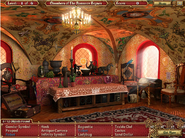
Puzzles [ ]
- Ice Rink Puzzle
- Sewing Fit Puzzle
- Memory Match
- Combination Puzzle
- Word Search
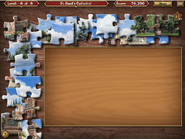
- Unknown (Possibly Chambers of the Romanov Boyars )
Painting Gallery [ ]

- 1 Big City Adventure Moscow
- 2 Big City Adventure Cairo

Theater of Conquest: Moscow (Level 4 City Event)
The new Warpath game-mode Theater of Conquest: Moscow (Level 4 City Event) is coming soon with tons of new activities, maps, and rewards!
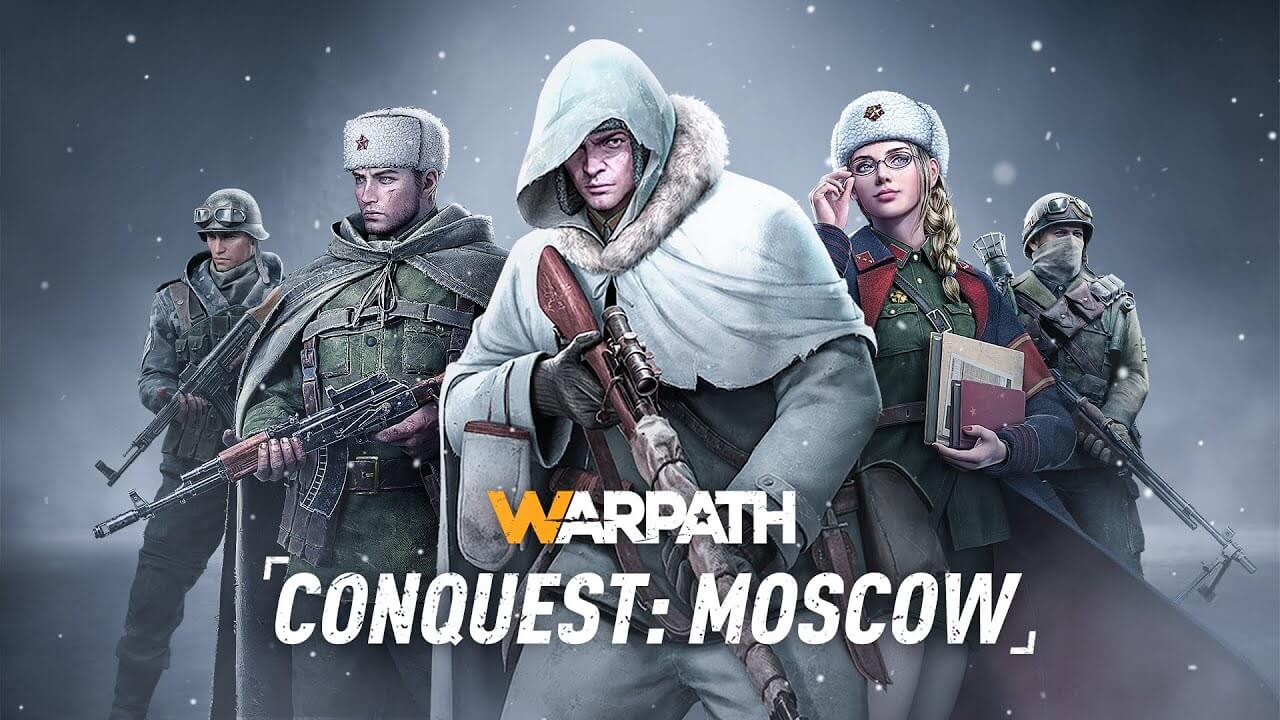
Theater of Conquest: Moscow
- New snowing city level 4 – Moscow
- Kremlin: This strategic place is the pinnacle of Glory in Moscow, and rests in the heartland of this territory.
- Forts: Forts enable either an attack DMG or DMG Resist Buff for Alliance Members. 4 Forts provide attack buffs and another 4 forts provide resist buffs.
- Settlements: Alliances can capture these to allow its members access to more exclusive Arms EXP and Ammo on the Black Market.
- Blockhouses: These defensive fortifications activate troop durability or troop firepower buffs (Four Blockhouses for each buff).
- Arms Factories: These Factories provide Alliance Members with a 5-star unit every 2 days after 12AM UTC.
- Gold Deposits: Collection sites where commanders can mine Gold.
- New achievement demonstration – seasonal medals, and so many more!

Theater of Conquest: Moscow Participation Processes:
The event takes place in 5 stages: Preselection, Matching, Warm-up, Conquest, and Reward!
Preselection Phase
Alliances in the same server undergo an intense contest for 8 days to decide who will qualify for the Conquest: Moscow.
The top 32 Alliances will be qualified for Conquest: Moscow. The number will vary due to different active player numbers in different servers.
The qualified Alliances will be locked that player cannot join or leave the Alliance, and the Alliance cannot disband. The locking state continues until the end of Conquest: Moscow.
Matching Phase
Your Adversaries will be selected from the qualified Alliances. Groups will be formed with 8 Alliances in each to enter the Conquest.
The matching will only take place within the same server for now.
Warm-up Phase
A Warm-Up Round is held before entering the Battle of Moscow, where alliances contend for alluring buffs.
Conquest Phase
The Warm-Up Round then closes as the War in Moscow kicks off. Alliance Members representing their League in the War can then enter Moscow to fight in the War.
Every 8 Alliances will be assigned into one match for the fights, but only one will win.
While the Conquest: Moscow is in progress, participating Commanders can move into Moscow from cities around the world for free, and can spend 1 Entry Permit to move back to the original city during this phase.
Reward Phase
After the Conquest Phase ends, all Commanders who participated will earn the new officer: Ivan Andreyevich Volkov (Winter Huntsman) , and his beloved dog Shemyaka.
The higher rank you and your Alliance have, the more rewards you will get.
Alliance leaders will be able to assign extra rewards to those who perform the best during Conquest: Moscow.
Download & Play Warpath PC
Avoid lags and battery-draining when doing prolonged combats. Bonus: Play multiple accounts easily !
Download & Play Warpath on PC
CITY OF MOSCOW FAYETTE COUNTY Moscow, Tennessee
Moscow TN is located on Hwy 57, just east of Rossville, with Collierville and Memphis just 30 miles to the west. One of the oldest town in Fayette County, Moscow dates its beginning back to 1827, when Daniel Head, owner of the land where Moscow stands, transferred it to five men. These five men formed the Town Company of Moscow, taking advantage of its location between the Wolf River main stream and the North Fork of the Wolf River to create an excellent trading center for southern Fayette County farmers. Before its settlement by pioneers, Moscow was a hunting and camping ground for indigenous Native American populations.
Several restaurants welcome travelers with home cooking, some of the best catfish, and southern delights to be found in the area.
The Wolf River provides a natural, unspoiled wilderness area for outdoor lovers. It flows north from Mississippi through Fayette and Shelby Counties toward the Mississippi River. The Ghost River section of the river is particularly unique. It is one of the most beautiful, varied and challenging wetland canoe trails in the country. The entire width of southern Fayette County (26 miles) is traversed by the river’s flood plain. The Wolf eventually meanders more than 80 miles making its confluence with the Mississippi River right in the heart of metropolitan Memphis.
A prime hunting ground for whitetail deer, raccoon, squirrel, rabbit and other small game, Moscow features a number of checking stations where hunters are welcomed. Hunters can also have their harvests processed for food and mounted for trophies.
Join The Chamber Today

IMAGES
VIDEO
COMMENTS
Cook's Voyages Game explores the many achievements and actions undertaken by Cook and his crews across three incredible voyages exploring the Pacific. Importantly, this game adds a perspective 'from the shore', from Larila, a proud Pakana woman from Tasmania's north-east. Cooks Voyage Game. In each game players choose their own missions, select ...
Explore your creativity with hundreds of options and design your dream megayacht while playing this engaging crazy all-in-one game: cooking game, restaurant game, kitchen game, renovation game, design game, time management game, and traveling game! ⭐ Cooking Voyage Features ⭐. 🍕 COOK tasty crazy diners and recipes with hundreds of ...
This online educational game is designed for students in years 3, 4 and 5 with alignment to HASS (Humanities and Social Sciences). Explore more and play onli...
Play now https://www.sea.museum/cooks-voyagesStep into Cook's world and captain a voyage of exploration into the Pacific.Undertake scientific and navigationa...
Cook's Voyages is a new online game developed by the Australian National Maritime Museum to engage students with the 250th anniversary. Importantly, the game takes the approach of highlighting a First Nations perspective on player choices as they take command of an 18th Century voyage into the Pacific Ocean, at this stage still unmapped by ...
Click on the world map to view an example of the explorer's voyage. How to Use the Map. After opening the map, click the icon to expand voyage information. You can view each voyage individually or all at once by clicking on the to check or uncheck the voyage information. Click on either the map icons or on the location name in the expanded ...
Cook's Voyages is a new online game developed by the Australian National Maritime Museum to engage students with the 250 th anniversary. Importantly, the game takes the approach of highlighting a First Nations perspective on player choices as they take command an 18 th Century voyage into the Pacific Ocean, at this stage still unmapped by Europeans. ...
Cook's third voyage left England in July of 1776, just as the American Revolution was taking off. His mission was to go around the Cape of Good Hope and then proceed to the west coast of North ...
Cook's Voyages. James Cook sailed on many voyages during his life. His most famous ones are the three Pacific voyages ( 1768-1771, 1772-1775, 1776-1779 ) when he was an officer in the Royal Navy. He learnt how to be a sailor when he was living at Whitby ( 1746-1755 ), in colliers from Newcastle to London, and vessels across to Norway and elsewhere.
Cook's First Voyage to the Pacific. James Cook was appointed to command a ship called Endeavour, which left Plymouth on 26 August, 1768. A list of what Cook was up to preparing for this voyage and during the voyage can be found in Paul Capper's list of First Voyage dates. Links to information about the ship, the people, and what happened during ...
Smarthistory's free, award-winning digital content unlocks the expertise of hundreds of leading scholars, making the history of art accessible and engaging to more people, in more places, than any other publisher. Historians, artists, anthropologists and members of the indigenous communities consider contemporary perspectives on Cook's ...
Cook's Voyages is a new online game developed by the Australian National Maritime Museum to engage students with the 250 th anniversary. Importantly, the game takes the approach of highlighting a First Nations perspective on player choices as they take command an 18 th Century voyage into the Pacific Ocean, at this stage still unmapped by Europeans. th
If you say "YES", the FREE Cooking Voyage - Crazy Chef's Restaurant Dash Game is your choice of time-management game & food games madness. Download & Play the free cook game for you now! Serve up the hungry customers in the restaurant, you can also decorate your own unique yacht! You can't miss it! Cook like a chef with the cooking talent!
The First Voyage (1768-1771) All dates are as written in Cook's Journal and are, therefore, in Ship's time. Note regarding proper names and names of places Cook visited on this and subsequent journeys. Names have often changed since Cook's explorations. An unbracketed name is the one given by Cook, on first use, and a modern equivalent ...
An excellent new book draws on Cook's letters and notebooks to tell the story of his third and final trip. Cook was almost 50 when he set off on HMS Resolution in July 1776.Among the crew he ...
Cook's Voyages is a new online game developed by the Australian National Maritime Museum to engage students with the 250th anniversary. Importantly, the game takes the approach of highlighting a First Nations perspective on player choices as they take command of an 18th-century voyage into the Pacific Ocean, at this stage still un-mapped by ...
MS-DOS Games; Historical Software; Classic PC Games; Software Library; Top. Kodi Archive and Support File; Vintage Software; APK; MS-DOS; CD-ROM Software; CD-ROM Software Library; ... The voyages of Captain James Cook by Cook, James, 1728-1779. Publication date 1842 Topics Voyages and travels Publisher London, W. Smith Collection cdl; americana
Classification. Captain Cook : Voyage of Discovery is a simple roll & move educational game produced by Studio Press and the NSW Parks & Wildlife Service in 1969. The box proclaims: 'Relive the perils of Cook's historic first voyage...watch out for unfriendly natives...unfavourable winds...dangerous reefs and look forwards to exciting discovery ...
Capt. Cook's Final Voyage : Fresh Air "A lot of things started going wrong from the very beginning," historian Hampton Sides says of Cook's last voyage, which ended in the British explorer's ...
Game Centre. Cook's Voyages. In this new online game students undertake scientific and navigational challenges while meeting with Australia's First People in world-changing encounters. Cook's Voyages explores the many achievements and actions undertaken by Cook and his crews across three incredible voyages exploring the Pacific.
Elizabeth Kolbert reviews "The Wide Wide Sea: Imperial Ambition, First Contact and the Fateful Final Voyage of Captain James Cook," a new biography by Hampton Sides.
A few weeks ago, the library of Cambridge's Trinity College (home of the recently defaced Lord Balfour portrait) exhibited four Australian fishing spears. They are all that remain from a collection of 40-50 stolen by James Cook and the crew of HMB Endeavour in 1770 - during the first landing by Europeans at Botany Bay. Cook's arrival wasn't a peaceful affair: two members of the ...
Thanks to Constantin Preobrazhensky (Moscow) for supplying info about the web site and the Stones show in Russia. Also thanks to Leonid Ulitsky, Italy, for info. Ticket information: +7-095-2349595 (for the orders) +7-095-2531033, +7-095-2531043 (for info) Email: [email protected] For more news see IORR 33 mailed out in May, 1998!
Big City Adventure Moscow is an unreleased future instalment in the Big City Adventure game series, presumed to be the next instalment, according to both the now defunct episodes on Pogo.com as well as the teaser at the end of the preceding game, which hints at a "colourful cathedral". The game description is currently unknown. Chambers of Romanov Boyars Kolomenskoye Estate Polytechnical ...
Theater of Conquest: Moscow. New snowing city level 4 - Moscow. New buildings: Kremlin: This strategic place is the pinnacle of Glory in Moscow, and rests in the heartland of this territory. Forts: Forts enable either an attack DMG or DMG Resist Buff for Alliance Members. 4 Forts provide attack buffs and another 4 forts provide resist buffs.
Moscow TN is located on Hwy 57, just east of Rossville, with Collierville and Memphis just 30 miles to the west. One of the oldest town in Fayette County, Moscow dates its beginning back to 1827, when Daniel Head, owner of the land where Moscow stands, transferred it to five men. These five men formed the Town Company of Moscow, taking ...